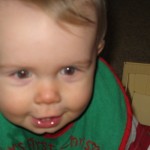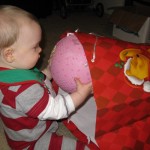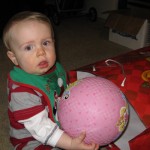INTUITIONS GUIDE CREATIVE DECISION MAKING
“Blink Thinking”
In his best-selling book, Blink: The Power of Thinking Without Thinking(Little Brown, 2005), Malcolm Gladwell justified the importance of intuitive, “gut” thinking in decision making. In fact, he pointed out that, contrary to our assumptions about our rationality, many high-level decisions are based more upon a “gut sense” or a “blink of an eye” impression than upon rational, logical thinking.
When they believe they are using objective indicators for choices, people are often influenced by subjective, peripheral factors “outside of awareness.” For instance, for generations, classical music orchestras believed that women could not master the instruments or the nuance of the music. Women were seldom hired.
Then, orchestras started having performers audition behind a screen, cutting out visual cues in making hiring decisions. To everyone’s surprise, chosen through “listening” alone, women were actually chosen a majority of the time, even for instruments “presumed” to be more “masculine,” like French Horn and other brass instruments.
Gladwell distinguished between two kinds of intuitive decision making:
· In the one case, a person has a “gut sensing,” an unclear, preverbal “feel” about something, which is very real and substantial and resilient, impossible to put aside or ignore, even though words for it can’t be found. An example: some museum curators have a “sense” that there is something wrong about an antique statue. They don’t know what it is, but their “body-sense” tells them there is something. Eventually, following this “intuition,” they discover concrete evidence that it is a facsimile.
· In the second case, a person makes a decision in “the blink of an eye,” without even awareness of an “intuitive feel” but out of an immediate, precognitive assessment of a situation. An example: a fireman deciding where to step, which way to go, what to do in a split-second emergency situation.
Gladwell says that we can’t really “unpack” our “gut senses.” However, although this is true about the split-second decisions in emergency situations, it is not true for the more common situations in his first case, where there is a gnawing, long-lasting “gut sensing,” an “intuitive feel,” for which words HAVE NOT YET been found. In these latter situations, Intuiti Focusing, “sitting with” the “intuitive feel” of “the whole thing,” and carefully looking for words and images which are exactly “right” in capturing this preverbal “intuition,” is a premiere way for increasing the usefulness of “intuitive” or “gut” information.
Using Intuitive Focusing In Situations Of Uncertainty
In her Market Focusing approach (www.marketfocusing.com ), Flavia Cymbalista taught Gendlin’s Focusing to people like George Soros, financier, and others needing to make decisions in situations of “uncertainty”, like the ever-changing stock market. Traders often had to follow their “intuition” and wished for something more substantial to base decisions upon.
Soros thought he used logical, rational indicators for decisions. Through work with Cymbalista, he realized that, actually, he got a “pain in his back” when his portfolio needed adjusting, and the pain disappeared when he got it “right.” He was following an “intuition,” a “bodily feel” without words. He and others learned that consciously using Gendlin’s Focusing to find words and images for “gut intuition” allowed even greater access to the “intuitive feel” for market decisions.
“Gut Sensing” Is Everywhere In Creative Decision Making
Here are just a few situations where pausing for some minutes of Intuitive Focusing can provide a way forward:
· You have a “gut feeling” of exactly what problem you want to work on, but you don’t have any words or images to describe it.
· Your boss hands you a problem to solve out of the blue, and you have no idea where to begin, how to approach it.
· You are “stuck” on a creative project, “blocked,” no inspiration about where to go next.
· You know that something is bothering you, your whole body is tense, you can’t sleep, but you have no idea what the problem is.
· You have an”inkling,” an “intuition,” but you can’t put it into words.
· You have a “hunch” about what to do, an action you want to take, but you can’t verbalize any reasons to justify it.
· You wake up with the “feel” of a forgotten night-time dream.
· You have a wonderful feeling of well-being, a “spiritual” feeling, and you would like to spend more time with it, finding a way to describe it.
· You have an uncomfortable feeling after an interaction with someone, but you don’t know exactly what it is about, so you don’t know what to do about it.
· You know exactly what you want to do but find yourself blocked, unable to move forward.
· You might have no feelings, no creative ideas. You feel like a flat piece of concrete.
· You feel totally stressed out, confused, overwhelmed —
Focused Listening To Aid In Creative Problem Solving
While a person can use Intuitive Focusing on their own to find words for “gut sensing,” having the help of a Focused Listener, in aFocusing Partnership or Focusing Group/Team, can make this process of “finding words” easier. Here is a hypothetical example.
The Focuser sits with The Creative Edge, the murky, intuitive “feel” of the whole Gestalt, and attempts to make new words and images using the Intuitive Focusing skill. The Listener uses Pure Reflection, simply saying back the words and images of the Focuser, without judgment or advice, and with emphasis upon reflecting “the unclear edge,” the “bodily, intuitive feel.” The Focused Listener can reflect back the Focuser’s actual words as well as the less-clear nuances, until the Focuser finds exactly the right new symbolizations to capture The Creative Edge.
Example:
The Focuser starts out with a “gut sense” about a problem. He knows there is something wrong, but he can’t put his finger on what that is nor on a solution:
Focuser: “There is something about the mechanical execution of this model that is not going to work — I don’t know what it is, but I can sense it. I’m uneasy about it —“
Listener: “So there’s an uneasiness there — something not right about the
mechanical execution —“
Focuser: (sitting quietly, pondering at the Creative Edge — ) “All I get so far is an image of red intertwining with white, two triangles intersecting — “
Listener: “So there’s an image — two triangles intersecting — red and white intertwining —“
Focuser: (some excitement in voice, opens eyes) Let me draw that (starts drawing with pen and paper, grabs red and white chalk — soon, a gear-like drawing emerges) —(evident excitement) Yes, it’s something there , in that gear box!!!
Listener: “So, you can see clearly now — it’s something in that particular gear box — “
Focuser: (closes eyes) “Let me sense into that some more (sits quietly, pondering at The Creative Edge — over a minute — ) — something, something twisty there —“
Listener: “Twisty —“
Focuser: (more closed-eyed Focusing, pondering at The Creative Edge — minute or more — sighs, shifts in seat — more pondering —)”Hmmmm — I think I’m getting it — something about the ratios there, the red too dominant over the white — “
Listener: “The ratios — red over white —“
Focuser: “I’ve got it — needs to be 8:6!”
Clearly, the Listener doesn’t even have to understand what the Focuser is talking about, but, still, having that outside person offering Reflection can carry forward the process of creating new symbolizations out of The Creative Edge.
Even though Focused Listening allows the Listener to occasionally use other kinds of responses (Asking For More, Focusing Invitations, and Personal Sharings), pure reflection is still the most powerful form of response to someone using Intuitive Focusing at The Creative Edge.
If you do not have a Listening/Focusing Partnership, consider whether there is a colleague at work, a friend or family member who is already an excellent listener and might be interested in learning the formal Listening/Focusing Partnership method with you. Then, use the multi-media materials in our Self-Help Package or the free download of Chapter Three: The Listening/Focusing Exchange (a link at the top of this blog entry )
The Blurry, Vague, “Feel of the Whole Thing” Holds The Next Steps
I invite you to use Intuitive Focusing again below to find next steps on a “creative project”: an article, a book, a poem, a song, a dance, a marketing campaign, an engineering breakthrough, some project needing creative ideas.
If you need to work more specifically on “blocks” to creativity, you could use Cornell and McGavin’s technique from last week, using Focusing to give a gentle hearing to the “part” that wants to “hold back,” as well as the “part” that wants to “go forward,” until steps toward resolution arise (Week Two Treasures In Blocks).
Focusing On A Creative Problem or Project Click here to find the exercise
Remember, it is often easier to learn Intuitive Focusing with the company of a Focusing Listener. See links below to find many resources, including self-help groups, and Creative Edge Focusing Consultants for individual Coaching or Classes and Workshops.
Download complete Instant “Ahah!” Mini-Manual, in English and Spanish, from CEF Website
Find links to free articles, personality tests, multi-media Self-Help training, Classes and workshops
Dr. Kathy McGuire, Director
Creative Edge Focusing (TM)
www.cefocusing.com
The site of new insights and creative solutions is at the edge of what is already known. This edge, The Creative Edge, holds implicit within it all past and future knowing about the problem, more than could ever be put into words in a linear way














